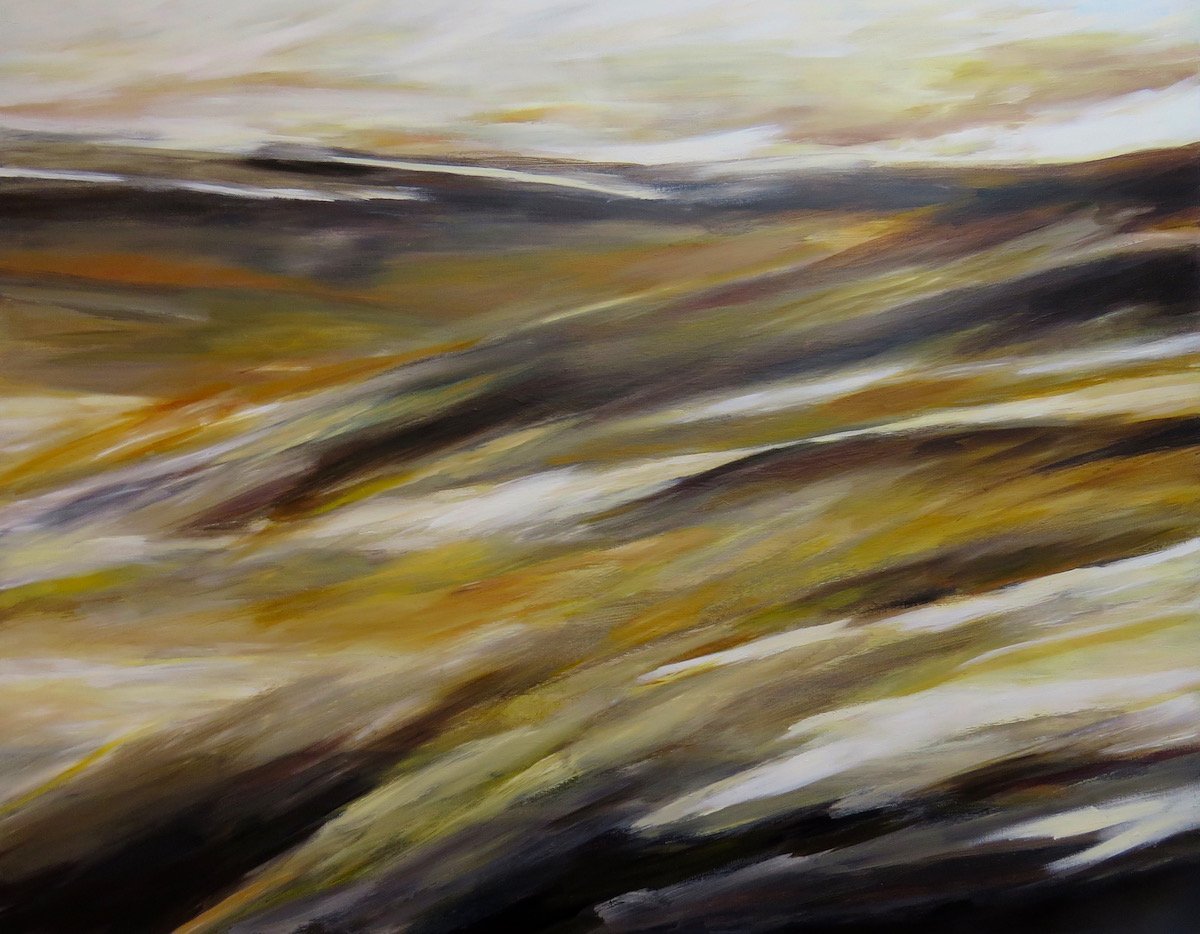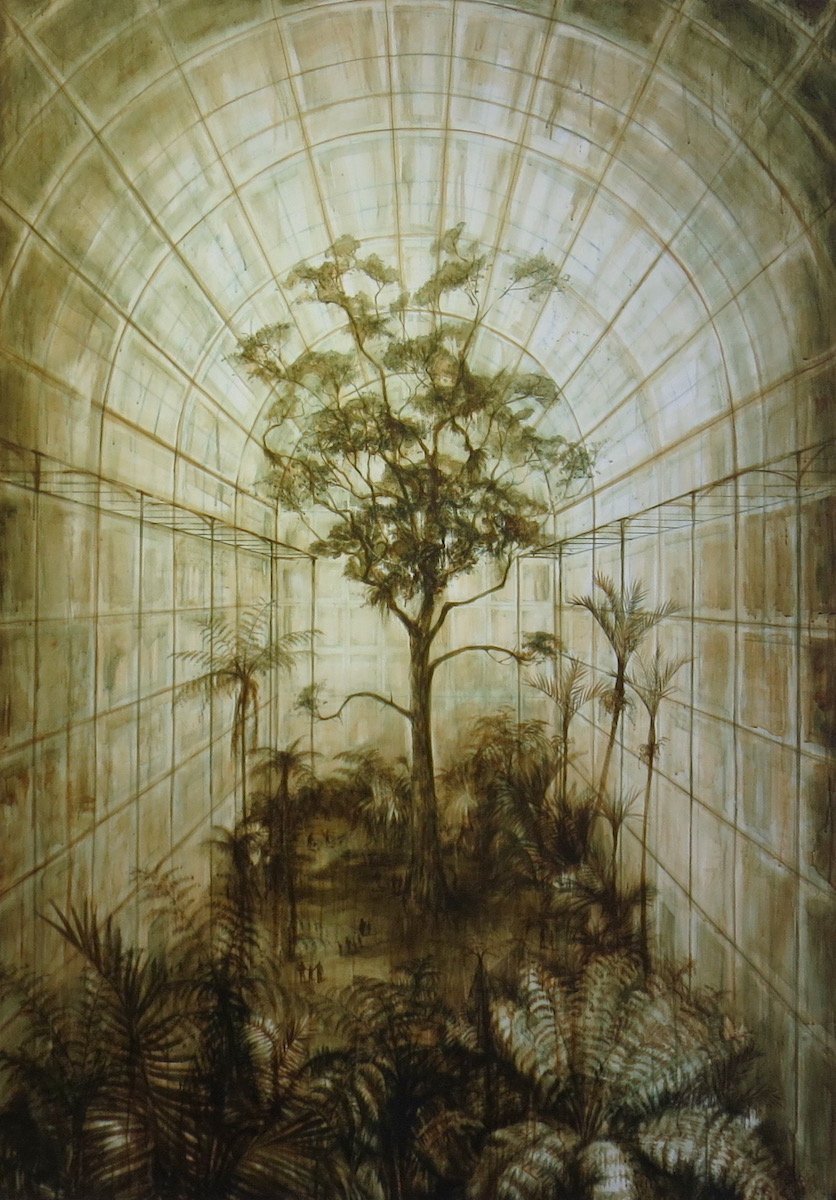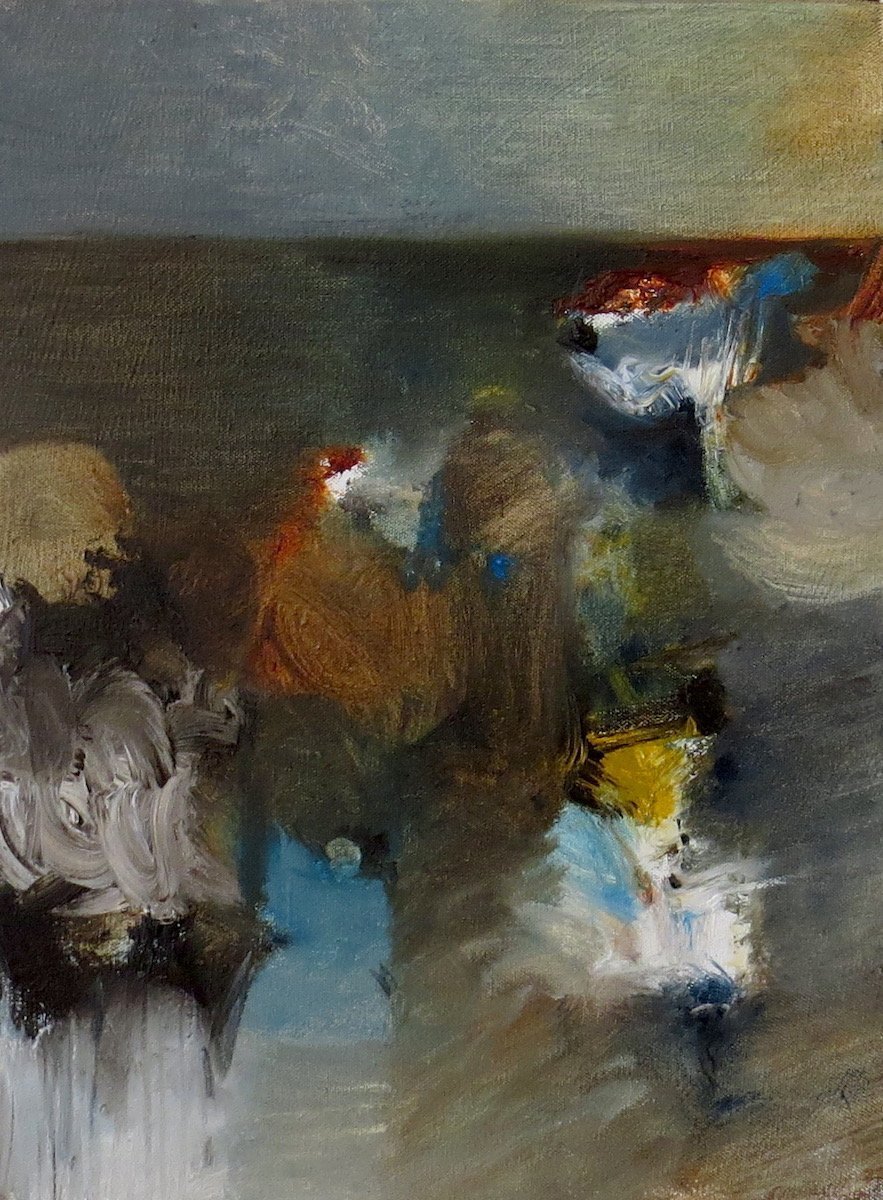
In her latest exhibition at Moray Gallery, Angela Burns has temporarily abandoned the rolling waters and mists of the Otago coastline to travel inland to the Strath Taieri. In doing so, she has radically altered her palette from the rich emeralds and ultramarines of the coast to an earthy and deliberately limited mix of bistre browns and umbers.
The artist's style, honed as it has been by images of the ocean, well suits the rugged grandeur of the Rock and Pillar range and its surrounds. In a series of single and two-panel works, Burns depicts the land as a series of static waves, forever poised on the point of breaking, yet also revels in the architectonic solidity of the land. Above all, it is the alien quality of the landscape which attracts the artist's attention, as she creates images where the horizon line is ambiguous and where hills and sky meet and merge into each other.
An interesting departure from Burns's usual large-scale acrylic works is the presentation of one small mixed media work on paper. In this, the land blurs and shifts under a misty sky lovingly depicted in pastel and acrylic. There is almost a print-like quality to this gentle, evocative work.

Three exhibitions are currently on display at Milford Gallery: masterful glasswork by Mike Crawford, pristine white ceramics by John Parker, and a series of astonishing oil paintings by Jenner Packer. The three exhibitions complement each other very well.
Packer's paintings follow a theme which she has been exploring for some time, in allegorical images of a world ravaged by the excesses of capitalism. As with her previous exhibitions, big money is represented by the figure of the bull, but whereas previously the animal was as corporeal as it was corporate, here it becomes a window, through which we can see the changes which have been wrought on a denuded world. As with Angela Burns's exhibition, the palette is reduced to earthy tones here accompanied by a deep sickly green, and the artist's use of thin paint has allowed streaks to run down the canvas to emphasise the damp and gloomy atmosphere.
The two House that Jack Built works are notable; in one, we see the slow construction of a new bull in a largely symmetrical landscape of tree stumps and cleared forest. In the other, a cathedral-like greenhouse is dominated by a massive preserved tree, possibly the last of its kind, the light behind it glowing like a holy aura.

As with Jenna Packer's work, there is a foreboding depth to Scott McFarlane's palette.
The works in his current exhibition are vague and shadowy, figures moving in and out of the mists of often forlorn and moody landscapes. The paintings, predominantly in oil, make use of roughly gessoed board to provide a textural background to images that are indebted to late 19th-century symbolism and romanticism, yet are overlaid with the ambiguity of expressionist art. Faces appear, often in unlikely places in the works, adding an extra element of unease.
Music plays an important role in McFarlane's work, as can be seen from the occasional nods to song lyrics in the titles of several of the paintings. The images are dark, powerful, and endlessly interpretable, with the ambiguity of the titles often adding another dimension to their possible meanings. We are presented with narratives, but the exact message of the scenes remains unclear.
There is a compelling nature to the works, which somehow capture an ephemeral topography while imbuing the landscape thus created with a wealth of shifting dark spirituality. It is as if we are seeing not just land, but also the souls and phantoms that have and still do inhabit it.
By James Dignan












